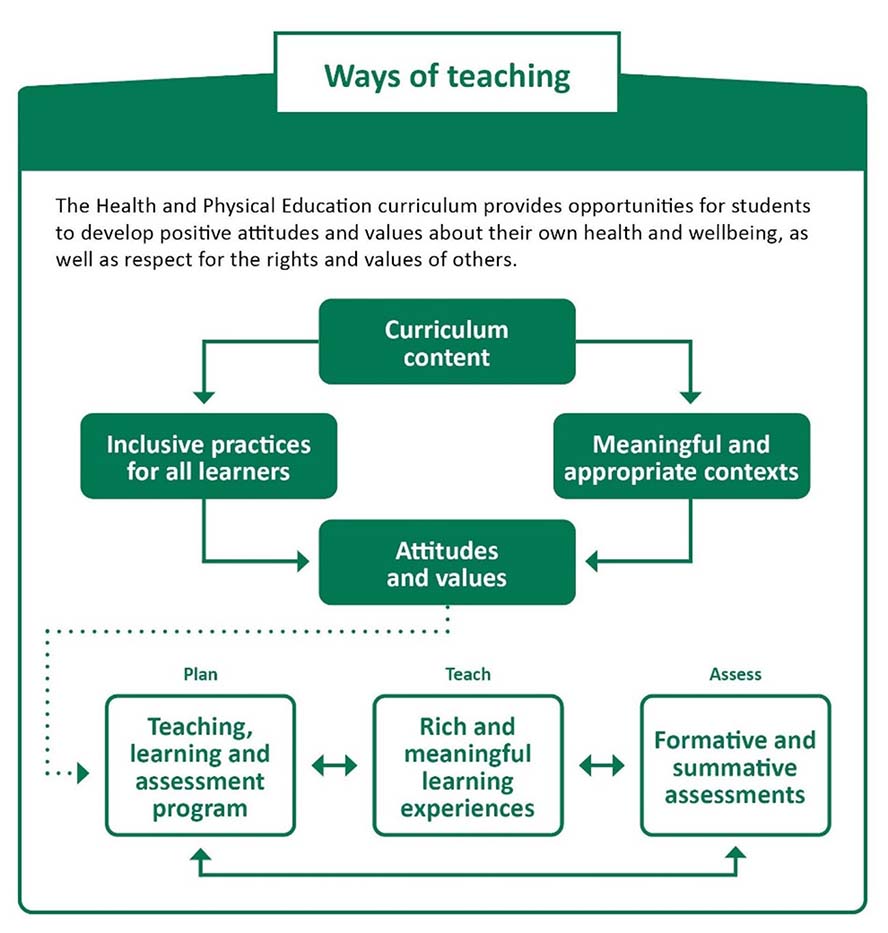Health and Physical Education - Ways of Teaching
The Ways of teaching complement the principles of teaching and learning in the Western Australian Curriculum and Assessment Outline (http://k10outline.scsa.wa.edu.au/). The principles focus on the provision of a school and class environment that is intellectually, socially and physically supportive of learning. The principles assist whole-school planning and individual classroom practice.
In Health and Physical Education, the two strands of Personal, social and community health; and Movement and physical activity, are closely interrelated. Consistent with a strengths-based approach, a successful Health and Physical Education program is one where teachers select ongoing contexts that are accessible and meaningful to students as a focus for building on their particular strengths and interests.

